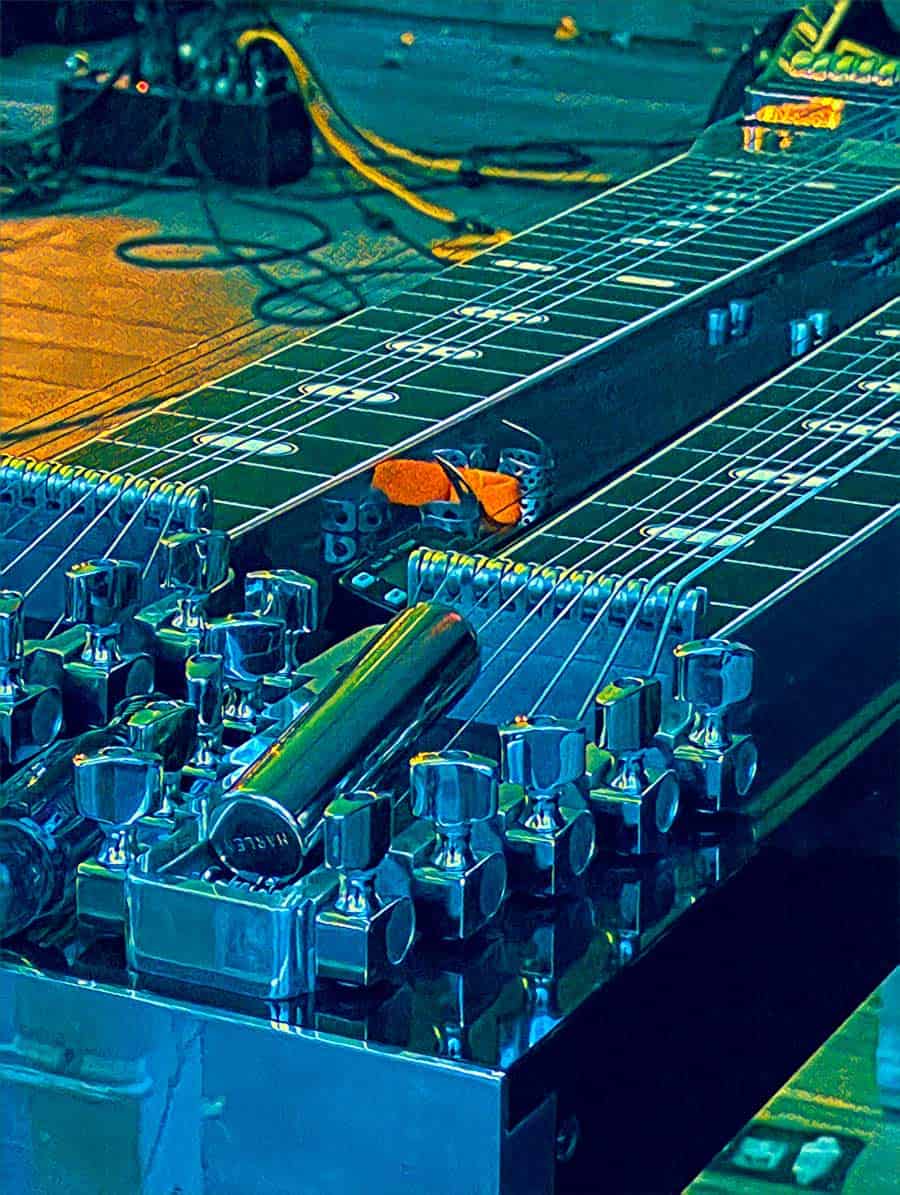As an Amazon Associate Playpedalsteel.com earns from qualifying purchases.
There certainly aren’t many instruments that can produce a sound quite like the pedal steel, and using finger picks and thumb picks is a great way to affect musical notes in a way that helps give the pedal steel its distinct sound.
Using them helps with sustaining notes, and is also beneficial for producing longer and smoother glissandos.
Since finger picks and thumb picks are used so much in playing, always try to find ones where the bands of the picks feel good around your thumb and fingers. Let’s take a closer look at using them for playing pedal steel guitar…
Creating That Classic Pedal Steel Tone
Finger and thumb picks are considered an important part of the pedal steel’s sound and tradition due to their ability to create more attack, and louder dynamics, when picking the strings.
Along with bar pressure, a volume pedal, and hot pickups, finger and thumb picks enable you to sustain notes for longer durations.
Using finger and thumb picks, to help with the attack and sustain of the notes, can help create that classic pedal steel sound. This sound can instantly connect with listeners and music lovers.
Pedal steel finger picks are usually worn on the index and middle finger.
How They Affect The Sound
Finger and thumb picks can certainly be an effective way to produce many sounds and timbres on the pedal steel guitar.
The picks can affect the pedal steel’s timbre by giving notes more clarity and brightness, which can help the instrument sound more emphatic in the higher frequencies of the music.
Picks can definitely play a large role in the sound you get from your pedal steel.
Finger Pick Materials
Most finger picks that are used for pedal steel are made out of some form of metal.
Nickel-silver and stainless steel are common types that many players use. These finger picks are often the same kind banjo and resonator guitar players use.
Most of the finger picks manufactured nowadays are made for use on any of these instruments, as most players of these instruments traditionally use finger picks.
Also, some players may use brass finger picks. These can produce a warmer tone and allow a player to create a different sound on the instrument.
What About Thumb Picks?
The Comfort and Feel Against Strings
The picking surface of thumb picks becoming scratchy and abrasive is the biggest obstacle I’ve had with finding ones that I like.
It took me a long time to find a thumb pick that I enjoyed using, so I was really glad when I discovered the Fred Kelly Slick Picks (link to Amazon), which I highly recommend.
All the other thumb picks I’ve used either didn’t feel comfortable around my thumb because of the band size and feel, or their picking surface would become scratchy really quickly through wear and tear.
Because this is a “slick pick” the picking surface on this lasts incredibly long and doesn’t start creating that scratchy feeling and tone.
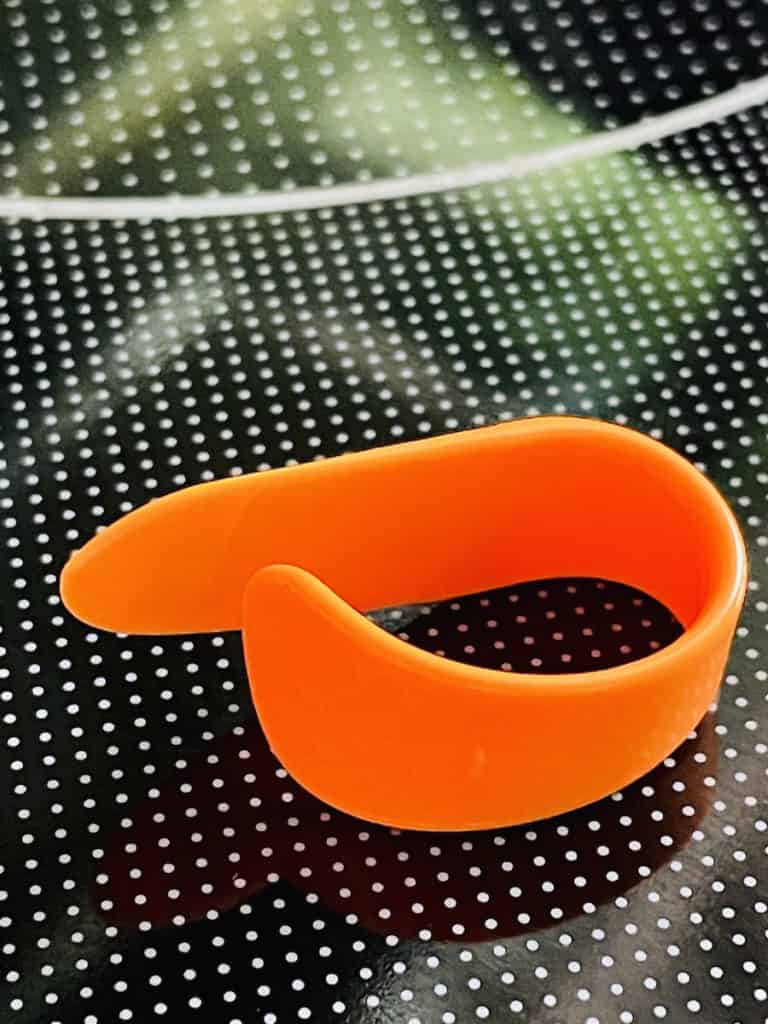
Also, I find that the slicker surface of the Fred Kelly Slick Pick increases my picking speed for single notes, as there is less resistance without the abrasiveness that other thumb picks are prone to.
If you find that you’re picking the strings at a particular angle with most thumb picks that doesn’t feel comfortable, try Dunlop’s Zookies Thumbpicks (click to view on Amazon). These are great picks for this scenario, and I used to play with them for years. They come in different degree angles as well.
For any thumb pick, the band around your thumb may be too tight at first. However, you’ll likely be able to shape it for your thumb size by physically expanding and adjusting it.
Find A Thumb Pick That Works Best For You
Since thumb picks are relatively inexpensive, and there are so many options and types, I recommend buying several different types at once to experiment with.
I’ve done this often when searching to find one that I enjoy using, and that is comfortable, then once I find one I like, I order several of them so that I can keep them in my steel seat and practice area.
This can also be a good way to determine which thumb pick size works best for your thumb size. They often come in different band sizes, and you definitely don’t want a thumb pick that is too loose or tight while you play.
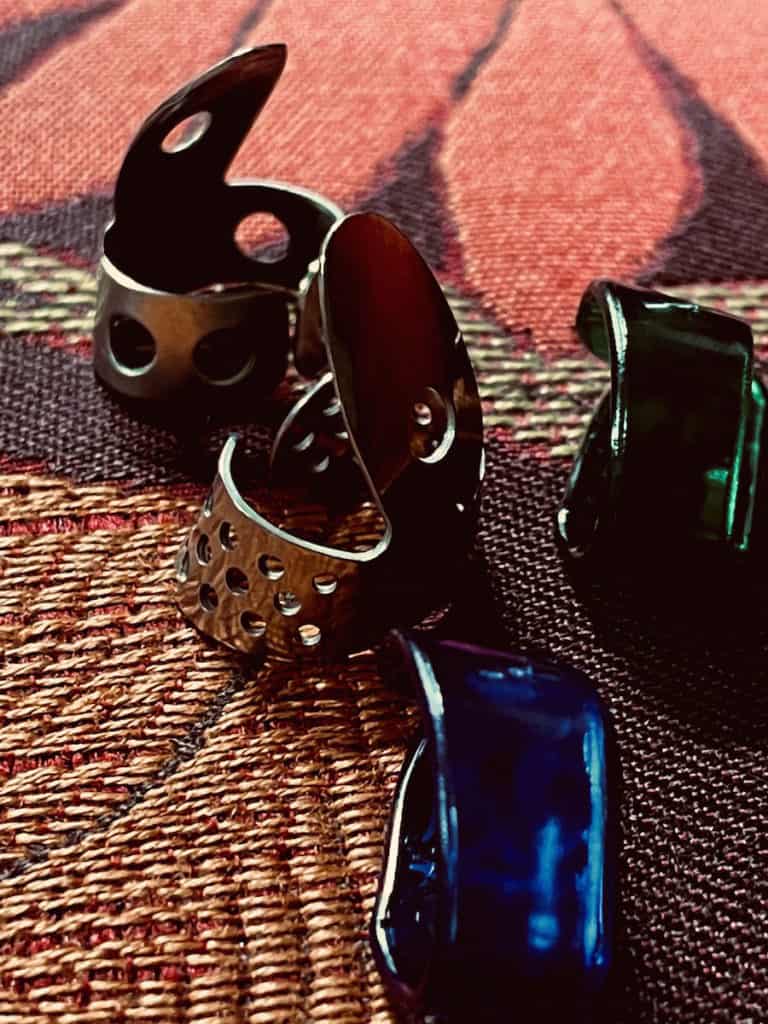
Oftentimes, if a thumb pick is too small in regards to the band size, they can be stretched to fit better around your fingers. If this doesn’t work, seek a larger size.
Thumb picks also consist of different materials, which may feel and sound different when played against the strings. Experiment to find one that you like playing with, and is pleasing to your ears too.
Here are some good options for thumb picks to try out and use:
Shaping Finger Picks
Oftentimes, when you begin learning pedal steel, using finger picks can feel very unnatural. Especially if you come from a guitar background.
Compared to using a regular guitar pick, or picking with the fingers naturally, pedal steel finger picks can feel uncomfortable or “clangy” around the fingers and against the strings.
This is completely normal and over time you will begin to feel like the finger picks are natural extensions of your fingers.
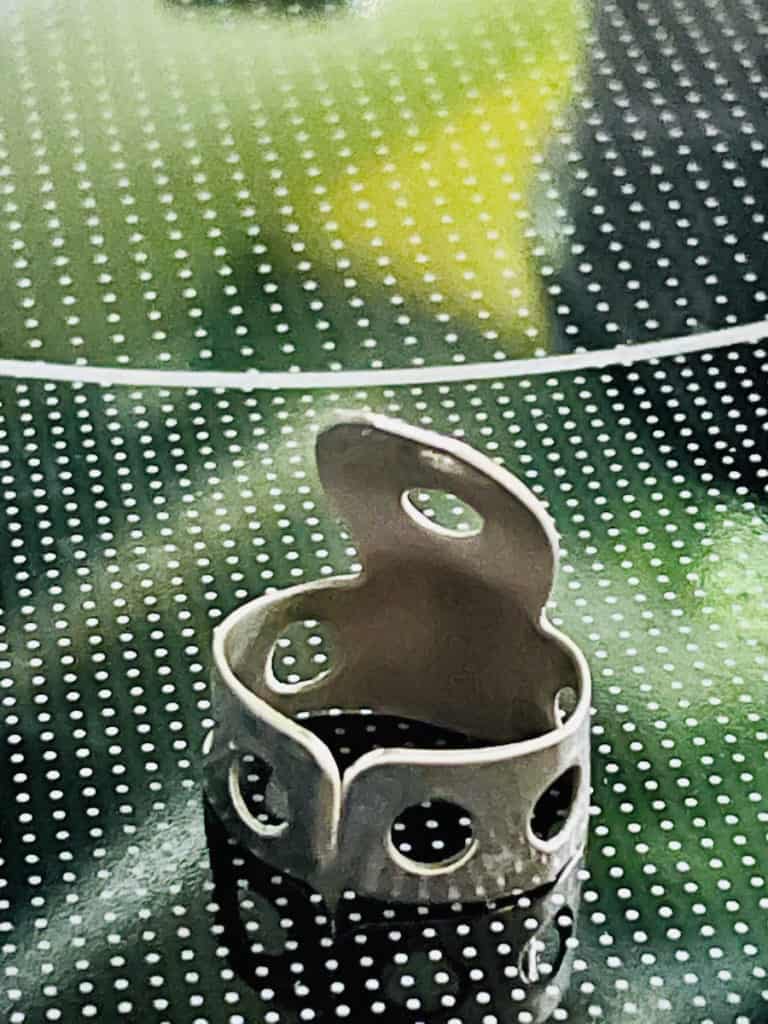
Shaping the finger picks, so that they fit more naturally around your fingertips, can really help with this, and make playing easier and more comfortable.
Although there are different ways to shape finger picks, each player’s process for doing so will likely be different. The goals in shaping finger picks are usually the same for pedal steel.
Picking Angles
Not only do you want the finger picks to feel comfortable on your fingers, you also want to position and shape the blade of the finger pick in such a way that it attacks the strings at their desired angle.
This angle, which is also relative to how much of the pick actually grips the strings, can be very dependent on your technique and style of playing.
The way you pick the strings, and block them with the right hand, will affect the angle and position of the right hand as it meets the strings. This will also be a factor when you choose how to shape your finger picks around your fingers.
More likely than not, you will learn how you like to shape your finger picks, and position them on your fingers and against the strings, through experience.
Getting Them To Feel Comfortable
One thing to look out for is whether the bands of the finger picks are too tight or too loose around your fingers. If the cuticles of the fingers become too distressed from tension by the finger picks, you will likely not feel comfortable wearing them.
Sometimes a little tension created by the finger picks just takes some getting used to, as having anything wrapped around the fingertips can feel unnatural at first.
Shaping fingerpicks can certainly be a trial-and-error process, both for putting them comfortably on the fingers and when picking the strings.
Using A Tool To Shape Finger Picks
Using a tool to shape them can help bend the metal in ways that the fingers cannot.
Needle nose pliers can be helpful, but keep in mind that the metal from the needle nose pliers, or any tool, can scratch the metal of the finger picks.
This may not be desirable, especially if that part of the finger pick is going to be touching the surface of the strings.
Which Finger Picks To Use for Pedal Steel?
National Finger Picks
Many players use National finger picks, a company that has been around since the mid to late 1920’s.
National’s NP2 Stainless Steel Finger Picks (link to Amazon) are good to use with pedal steel due to their comfortable and smooth band size, as well as how they feel against the strings.
These picks bring clarity to the attack of the strings when they’re picked, and they can give the pedal steel a nice projecting tone. Many banjo and resonator guitar players use these as well. They’re reliable and have stood the test of time among musicians.
ProPiks
A more modern brand, ProPiks have gained popularity in recent years among players.
I really like these picks because of their type of band, which can feel really natural around the fingertips.
ProPik offers many different band sizes, styles, and thicknesses. Some of the blades come in different angles in relation to the body of the pick, which can be nice.
Players that pick the strings at a certain or unique angle may benefit from having a pick with a different blade angle.
Altering the angle of attack on the strings can be a way to grip more surface area of the string with the ends of the picks. This can sometimes be beneficial for your tone, and also increase your picking accuracy and precision.
Using Different Types
For many years now, I’ve used a National finger pick on my index finger and a ProPik (with its wider band) on my middle finger.
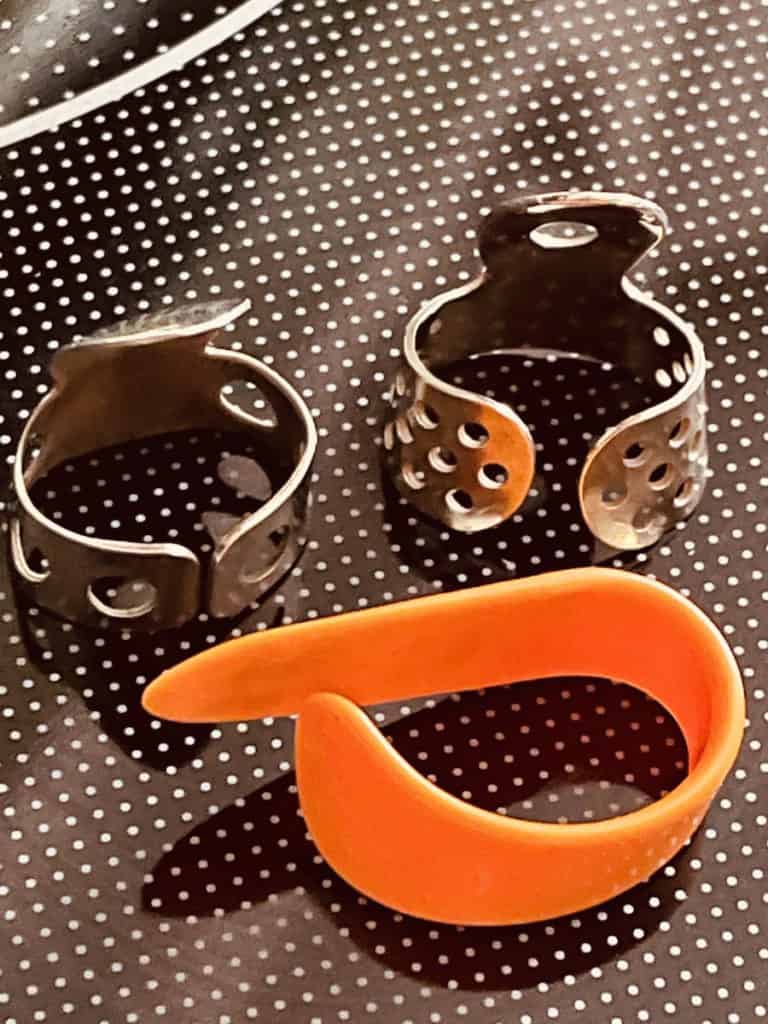
This feels more natural for each particular finger, and the contrast in tones can be a nice way for individual notes to stand out against each other, especially when played in chords.
Try this out if you find it comfortable and like the effect it has on your tone.
Just like shaping finger picks, sometimes finding the right brand or style of finger pick can come down to some experimenting.
Playing Without Finger Picks
Of course, there’s no set in stone rule that you must use finger picks when playing pedal steel, however traditionally most players of the instrument have used them.
If you choose not to use finger picks, you have a distinct advantage by being able to produce a warmer, more natural tone to many people’s ears.
However, one disadvantage of this is that you will probably lose some of the power or force behind your picking, which can help with the sustain of the notes.
The pedal steel has such a hot output from the pickups (and many amps are very powerful anyways) that if you choose not to wear finger picks you can definitely go a long way without them.
Like most slide guitar players, you may find this to be more natural and suitable for your needs on the instrument. Especially if you came from a guitar background before.
I’d recommend playing and practicing with finger picks though, because you’ll probably find it easy to play without them if you choose to.
You’ll then have the traditional option of picking the notes to create the classic timbre of the pedal steel.
Also, a good option for getting the warmer tone of the bare fingers, while still learning the art and tradition of picking with finger picks, is to use brass fingerpicks such as National’s NP2B Brass Finger Picks (click to check them out on Amazon).
It will be a lot harder to learn without finger picks and then try to use them whenever you’d like. You’ll likely be able to pick both ways effectively if you just go ahead and play with finger picks. The best of both worlds!
Advantages Of Using Finger Picks
After using finger picks for a while, you may find that they can increase the speed and tempo at which you can play notes. This is because they usually slide off of the strings quicker (after picking them) than your bare fingertips.
A player may also choose to use finger picks on the ring and/or pinky fingers for more picking options.
Traditionally however, finger picks are usually worn only on the index and middle fingers for pedal steel playing (along with the thumb pick on the thumb).
However you choose to use finger and thumb picks for your pedal steel playing, enjoy the sounds you can create with them!
Thanks for checking out this page, hope it is helpful and makes playing more enjoyable! If you’re interested in diving deeper into playing E9 pedal steel, check out these resources and guides…
The Chord Guide for E9 Pedal Steel (E-Book, Digital Download)

Learn the chords on the E9 neck in a way that makes playing simple and enjoyable…
- Almost Every Chord You’ll Ever Need for E9
- Intuitive and Easy to Use
- Make Use of Pedal and Lever Combinations
- Example Tabs of Chord Movements
- Easily Utilize the Nashville Number System
- Great For Any Key and Style of Music
Includes a bonus section of over a hundred pages of extra chord charts, key references, and more!
Playing Pedal Steel:
The Essentials
An easy and intuitive approach to mastering the pedal steel…
- An in-depth look at bar control, the right hand, using pedals, & the volume pedal
- Multi Angle Views – that you can always reference.
- Ways to Practice, How to Practice, What to Practice.
An online pedal steel lesson series – includes a free pedal steel EBook!
More Digital Downloads for Pedal Steel…
The Scale Book for E9 Pedal Steel
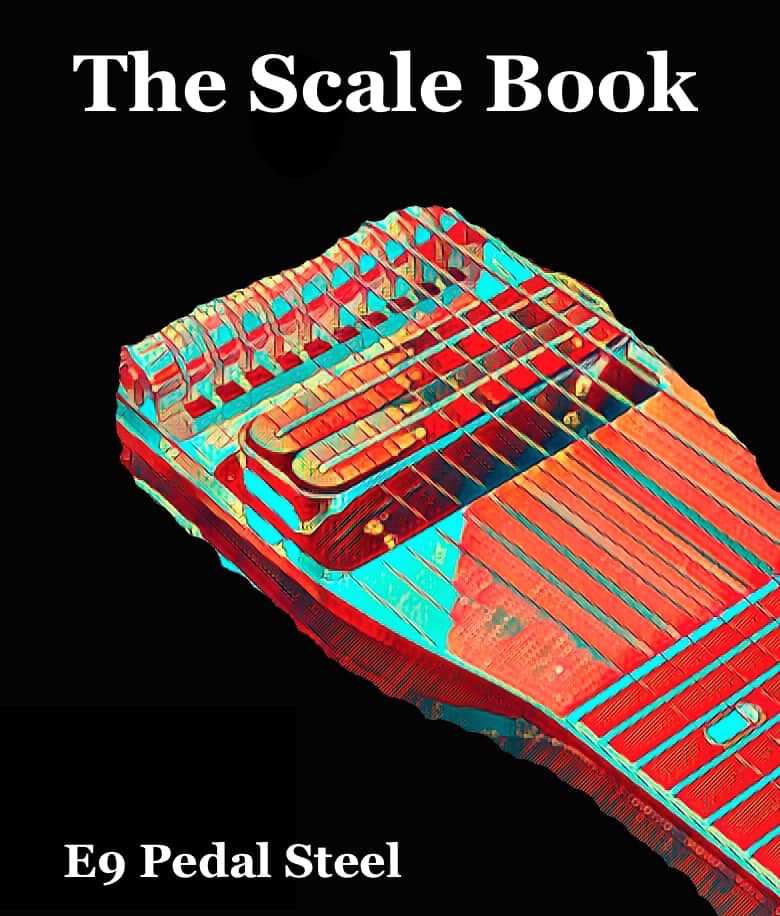
Over 1,000 Pages with Tabs and Diagrams!
- Easy to Use Reference for Practicing
- All Major and Minor Pentatonic Scales, Modes, Major Scales
- All Keys, and Covers the Fretboard
- Includes Pockets of Scales
The Art of Right Hand Technique
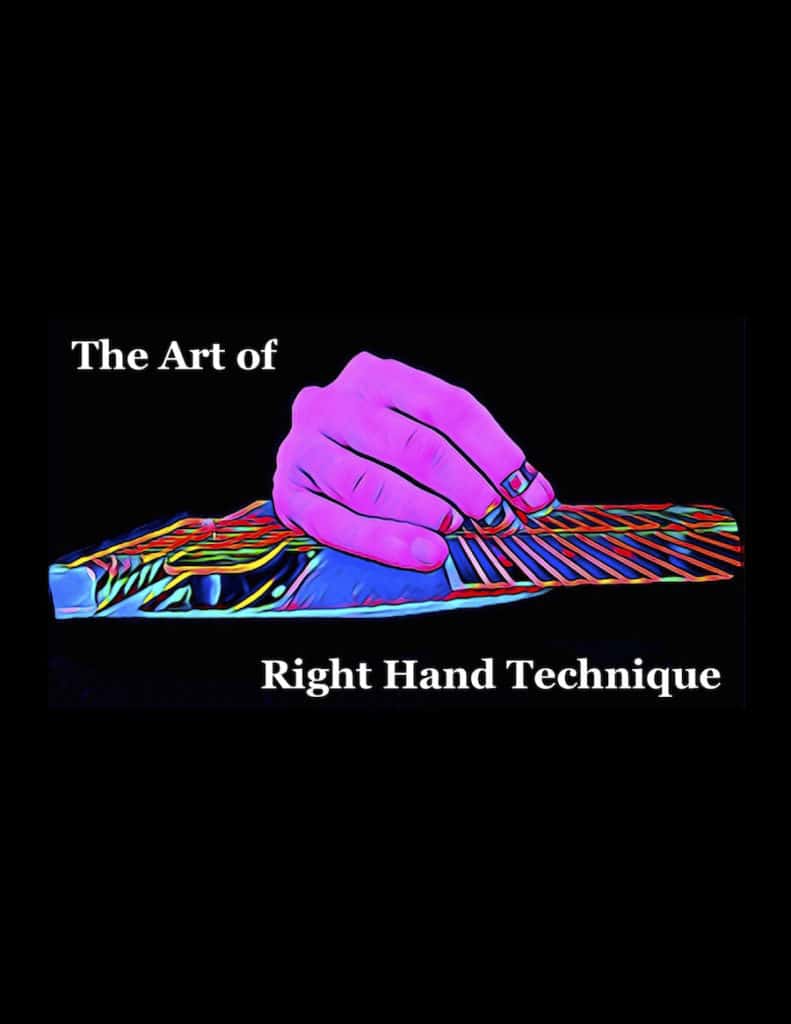
A detailed look at one of the most challenging and mysterious aspects of steel guitar playing: the right hand…
- An In-Depth Guide to Picking and Blocking
- How to Efficiently and Accurately Play Notes on Steel Guitar with Info, Advice, and Tips…
- Great for Pedal Steel, Lap Steel, and Console Steel Guitar
- Over 100 Pages with Graphics, Illustrations, & Practice Exercises
200 Country Riffs & Licks for E9 Pedal Steel
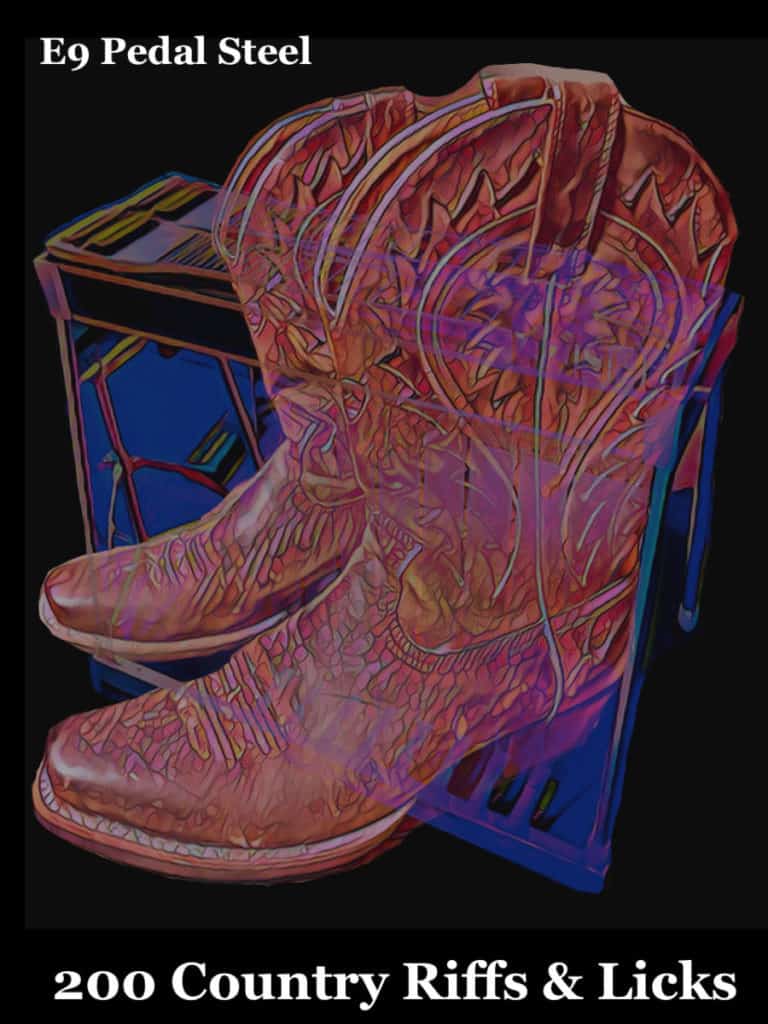
Add these country licks to your playing repertoire…
- Easy to Read Format
- Includes Rhythmic Notation
- Playing Over Chord Changes
- Great for Country, Alt-Country, & Honky-Tonk Styles
